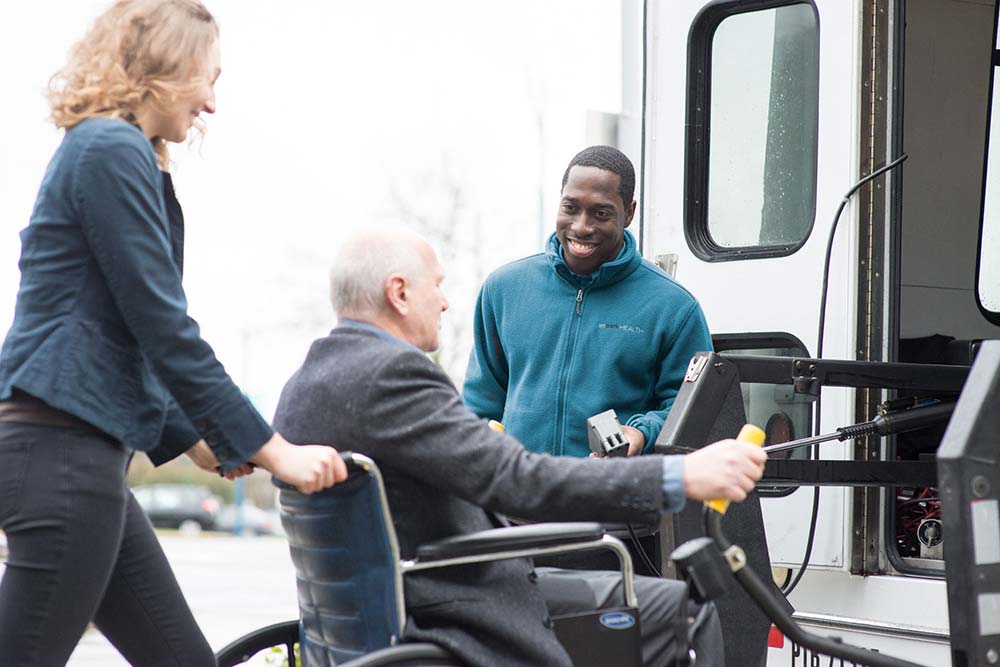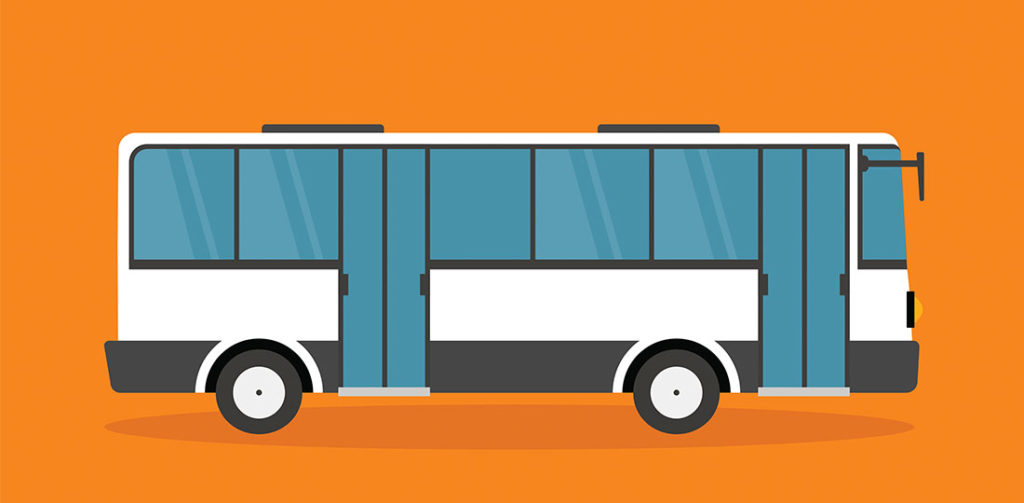1. What Is Transportation Demand Management (TDM)?
Transportation demand management (sometimes referred to as comprehensive transportation management or traffic demand management) is a collection of community-based strategies that encourage a shift away from single-occupant vehicle (SOV) usage to other, more sustainable methods of transportation.
Commonly, TDM encourages the use of public transportation, hospital-managed shuttles to transit, ridesharing, and bicycles. Staggered parking rates can also be deployed as a TDM strategy — an increasingly popular approach in the healthcare sector due to its effectiveness and ability to produce revenue.
2. Why Should Healthcare Providers Have a TDM?

Transportation demand management is not exclusively a healthcare initiative. However, its impact within a healthcare context is particularly palpable; it can remove barriers to clinical care, act as an investment in wellness, support ADA compliance, and improve the overall patient experience — all with minimal capital output when correctly managed.
Healthcare providers may even receive funding toward TDM design and implementation and annual grants for remaining in compliance. Some local transportation and planning authorities may also issue penalties to institutions that do not meet their TDM program goals.
3. What TDM Challenges Do Healthcare Providers Face?
Hospitals are faced with upholding a fine balance when implementing TDM initiatives. While well-managed and sustainable TDM programs remove potential barriers to healthcare, preserve the clinical care continuum, and improve stakeholders’ entry/exit experience, poorly managed TDM plans — i.e., those that fail to provide pleasant and reliable transportation — can inadvertently deter patients.
According to the American Hospital Association, perceived distance and time burdens are routinely cited by patients as a barrier to healthcare access — a factor of particular salience for medical campuses situated away from downtown cores.
“People with reliable access to private transportation are more likely to go to a medical appointment than those who rely on public transportation.”
American Hospitals Association, November 2017
4. What Kind of TDM Strategies Can Healthcare Providers Implement?

A complimentary shuttle service: Shuttle buses that connect passengers to on-campus care and external transit hubs are a popular choice for large sites and multi-campus healthcare systems, as they reduce the congestion caused by single-occupant vehicles while presenting an opportunity to bolster patient and staff satisfaction.
GPS- and WiFi-enabled vehicles, in particular, enrich the entry/exit experience for passengers, while the inclusion of a lockbox for the transportation of campus mail can reduce courier costs and vehicles on-site.
Public transportation: Public transit’s role in TDM programs is simple, scalable, and sustainable. Providing employees with subsidized or free transit passes, as we facilitated at Regions Hospital, for example, can reduce SOV traffic on-site while also increasing parking capacity for patients, visitors, volunteers, and physicians.
Larger healthcare providers may also benefit from working with local transportation authorities to explore updating bus routes/schedules to improve campus accessibility.
Bicycle programs: Simply constructing a secure bike parking cage can be enough of an incentive for some to cycle to your campus — particularly when coupled with patient transition zone enhancements.
Leasing a small area of your campus to a bicycle-sharing company or providing a financial incentive/subsidy for cyclists may also curb automobile traffic on-site.

Patient transition zone enhancements: Making your patient transition zones and other outdoor spaces as aesthetically appealing as possible can encourage individuals to embrace and engage with the overall transportation plan for the facility. Visual improvements can include the preservation of green space, addition of planters, strategic placement of friendly wayfinding attendants, and even the introduction of music.
“Some patients use their vehicle to alleviate anxiety. It allows them to remain in their own space, which they control, for as long as possible before yielding to clinical care. Making your patient transition zone as friendly and welcoming as possible mitigates that anxiety. It extends their comfort zone beyond their vehicle and into your campus.”
Rick Wilson, vice president of Impark
Carpooling incentives: Encouraging employees to carpool reduces SOVs on-site and can lessen feelings of stress and loneliness, thus doubling as an investment in employee wellness. Carpooling incentives can be effectively deployed by asking your parking provider to identify and track corresponding employee shifts, assist in coordinating carpooling routes, and provide discounted/free parking for participants. Offering transit deals in case of emergencies or carpool “no-shows” can also help facilitate program adoption.
Staggered parking rate structure: One of the most effective ways of curbing SOVs is the introduction of paid parking or careful revision of existing fee structures. In order to preserve the patient experience, a variety of paid parking options should be offered to accommodate patients, visitors, staff, and volunteers without contributing to income inequities.
Setting variable, demand-oriented parking rates helps maximize parking capacity, frees more spaces for short-term parkers, and reduces search traffic on-site.
As discussed in Is Free Parking Really Free?, some healthcare providers express concern that implementing charges will compromise patient satisfaction. Research proves, however, that this is a false dichotomy — there is, in fact, a strong correlation between superior patient experience and healthy hospital margins. This suggests patients and visitors are prepared to pay nominal charges if their healthcare provider delivers tangible, quantifiable improvements (such as the aforementioned patient transition zone enhancements.)
5. What Role Should Your Parking and Transportation Operator Take in Your TDM Program?
Your parking and transportation operator should be ready to play as big or as little a role in your TDM program as needed. Based on your site-specific needs, their duties could range from simply providing benchmarking data to the recommendation and implementation of initiatives that can move the needle toward achieving your TDM goals. Like Impark HEALTH, your parking and transportation operator should know how important TDM is to preserving your site’s accessibility, patient experience, and continuum of clinical care. If that doesn’t appear to be the case, it may be time to re-evaluate your parking provider.
Impark HEALTH
Impark HEALTH helps healthcare providers of every size take a balanced, educated approach to transportation plans by leveraging parking metrics, implementing SOV-reduction techniques, and using our position as your first point of patient care to conduct stakeholder outreach and co-design initiatives. No matter where you are in your TDM journey, Impark HEALTH can provide the knowledge and support you require to navigate to a successful solution.
Let’s see how we can help you. Contact an Impark HEALTH specialist today.
Spencer Sechler is a director of business development. Email him at ssechler@impark.com.




